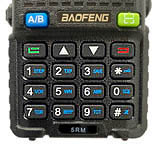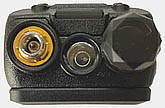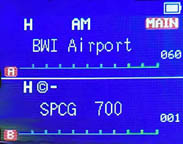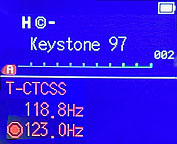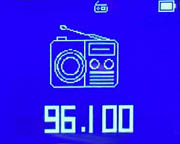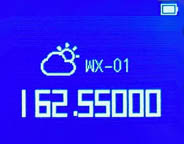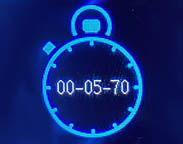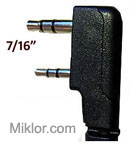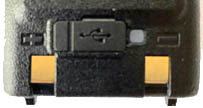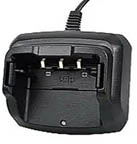Product Review
Baofeng
5RM
VHF / 220 / UHF Handheld
6 Band Rx w/Airband

|
Baofeng 5RM Description
The 5RM is one of the newer Baofeng models with 999 channels, High Power and Tri Band operation. It also includes: - AM Aircraft receiver - One button NOAA channel access - High resolution color LCD - USB-C charging Very Important Note There was an older series dual band model labeled UV-5RM (2015). The model described in this review is the new triband handheld labeled the 5RM (2023) which is sometimes also mislabeled as UV-5RM. In the Box - 5RM Handheld - 2500 mAh battery - Charger Base with AC adapter - Belt clip - Wrist Strap - Earpiece / Microphone - U/V Antenna – 8.1" (21cm) - User Guide – English 41 page Specifications can be found HERE. Operation / Users Guide can be found HERE Frequency Summary 65 -108 (RX) 108-136 (RX) 200-220 (RX) 350-390 (RX) 480-520 (RX) 136-174 (TX & RX) 220-260 (TX & RX) 400-480 (TX & RX) 1.77”color Screen 999 Memory Channels 10W Rated Output Power NOAA weather broadcast Channels Type C Battery Charging Transmitter The Transmit frequency range of the 5RM is 136-174 / 220-260 / 400-480 MHz. The high power levels hold pretty close to the 8W range, with 3 power levels. My audio reports have been excellent on both local repeaters and simplex. Power levels are listed below and were taken using a calibrated Bird Termaline wattmeter.
Receiver and Audio The receiver sensitivity is excellent. I found the receive audio is very good with wide and smooth frequency response. This is due to the 1.0 watt audio and the 1.5" (40mm) speaker. Aircraft Receive Based on the clarity of the reception, it appears the radio is well capable of Receiving the AM Aircraft band. (108-136 MHz). I'm located between two major international airports plus several small local ones. With Ground to Air, Air to Air, UNICOM, Helicopter, etc. there's plenty to listen to when the local ham repeaters are not active. Tone Search/Scanning Along with Channel Scanning and Frequency Range scanning, this radio also has Tone Scanning capabilities. When this option is selected, a nearby transmitter's frequency and CTCSS/DCS access tone will be displayed.van be shown. Enclosure The 5RM case has a good solid feel and weight, much heavier and more solid than its predecessor, the UV5R, and fits the hand well. It weighs in at 10.4oz (295g) with the battery attached.
The keypad buttons are pretty straight forward. The only new button is the green button on the upper right. It's used to change bands when listening to the FM broadcast frequencies.
The included "dual band" antenna is an 8.1" which is a fairly common size for a handheld. The antenna sweeps well and performs very well in the ham bands, but does not include the 220 MHz band. There was a definite improvement using a Nagoya NA-771 for UHF/VHF operation, especially when receiving the Aircraft frequencies. The 771 is about 10" longer (15.5"), so a difference would be expected., but I'll probably stay with the stock antenna for local coverage.
The top configuration is fairly standard with antenna connection, LED light and volume control.
On the right side of the radio is the K1 style programming port. On the left is the PTT button and two (2) pre-programmed function keys. - Long Press Top turns on the flashing LED flashlight / alarm. - Short Press Top turns on the FM Broadcast radio. Once the FM radio activated, a short press of the '#' key starts the frequency scan. - Long Press Bottom opens the squelch. - Short Press Bottom turns on the LED Flashlight.
Display The LCD can display up to 12 character channels names in both the upper and lower display. Here are samples of the Channel, Menu and FM Radio displays.
A long press of the zero '0' key switches the receiver to the NOAA weather channels. A long press of the "#" key starts the scan of the 10 NOAA channels. A short press returns radio back to transceiver mode. There's even a stop watch option.
There are currently two software programs available for the 5RM. One is the factory software that can be found at the Software by Model section (T6UV) of Miklor.com. The second software option for the 5RM is CHIRP. Like most new radios, the factory software takes a little getting used to, but for the most part is pretty straight forward. Factory Software The radio includes the AM Aircraft frequencies between 108-136MHz. One of the major shortcomings of the Factory Software (T6UV) is not being able to directly create airband channels. The developer forgot to add the 108-136 MHz as a valid input range. To get around this, you need to program the channels manually using the following procedure. - Using VFO/MR button, Set radio to Frequency Mode (VFO) - Enter the desired frequency - Press the Green button (menu) - Using the Up/Down arrows, select menu item 30 - Press the Green button (memory channel) - Using the Up/Down arrows, select the desired channel number (must be an Empty/Unassigned channel) - Press the Green button (receiving memory) - Press the Red button to return to VFO mode - Using VFO/MR button, Set radio to Channel Mode Channel frequency has now been entered. Use the software (T6UV) to assign a name to the new channel. CHIRP Software Compatibility The good news is that the 5RM is fully compatible with CHIRP. This includes adding Air Band receive channels directly. Airband Frequency List A good reference to Aircraft Frequencies can be found at Frequency Lists. The 5RM will scan aircraft channels at a rate of approximately 5 to 6 channels per second. Programming Cable The 5RM uses a K1 style cable where the UART chip is part of the cable. The standard K1 style jack allows for all previous accessories such as the QHM22 Spkr/Micr. If this error message appears: "Please check all connections and communication port settings", it is normally caused by the cable not being fully seated in the K1 connector. A very slight trimming of the programming cable might be required.
Included with the radio is a hefty 2500mAh battery and charging base. A really nice addition is the USB-C charging port on the rear of the battery. A standard USB-C cable can be used to charge from any USB power source. There is a charging indicator on the battery which shows Red while charging and Green when fully charged. Note: This is a charging port for charging the radio's battery only. The USB-C port cannot be used as a source for charging other equipment such as cell phones, etc.
- Solid build - Includes Airband (AM) receive - 999 channels - USB-C battery charging - Pre Programmed NOAA weather channels - The 220 band works fine with the proper antenna - CHIRP software compatible Concerns - Factory Software (T6UV) does not program the Air Band frequencies. Conclusion The good news is that after over a decade, Baofeng has finally upgraded the design and firmware of their radios. The software leaves a bit to be desired, but the 220 MHz band and Airband receive are nice additions.
Note: This equipment was received for the purpose of a fair and unbiased review. All findings are factual based on the equipment received. |
||||||||||||||||||||||||||||
BTECH 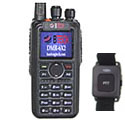 DMR6X2 PRO Dual Band (Review) Anytone 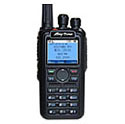 D878UV II+ Dual Band (Review)  D578UV Series Mobiles Hotspot  SkyBridge MAX (Review) Ailunce 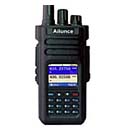 HD1 / GPS (Review) Amplifiers  BTECH DMR Amps UHF VHF (Review) Repeaters  Ham / GMRS Commercial Repeaters Duplexers |
